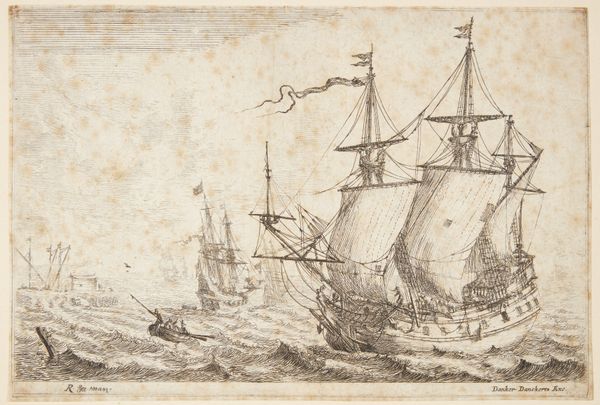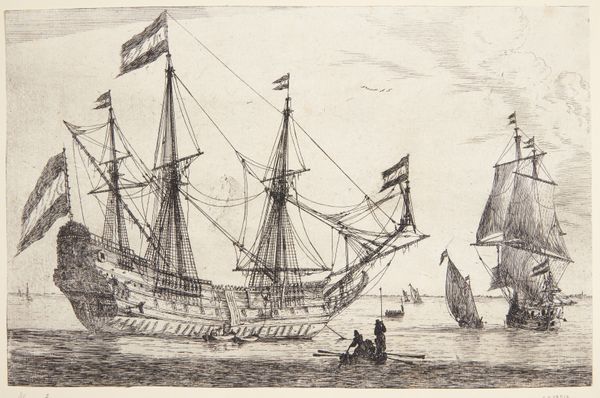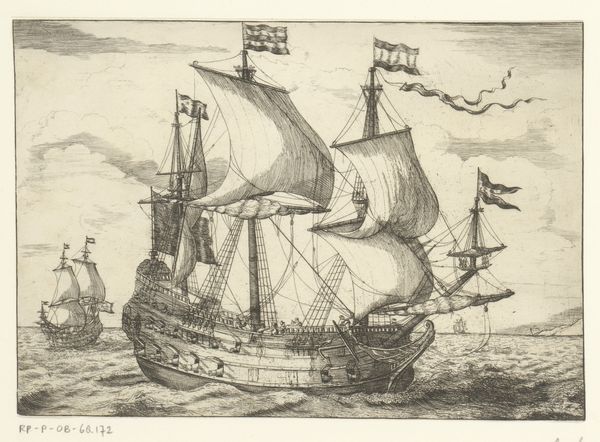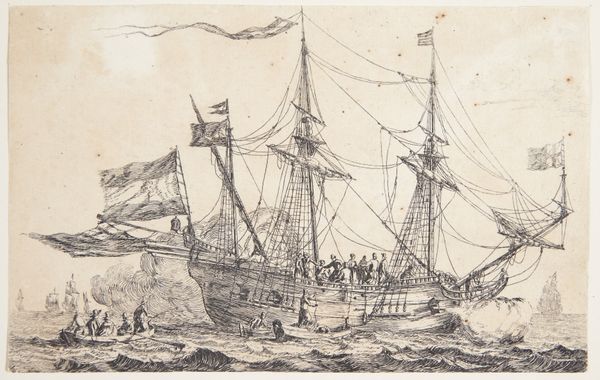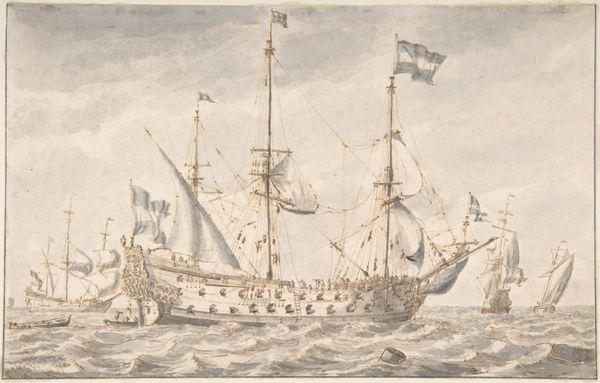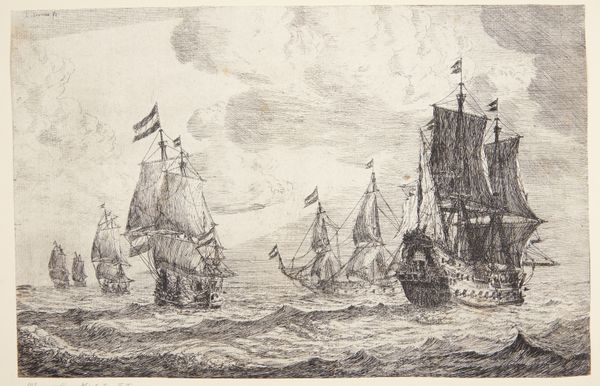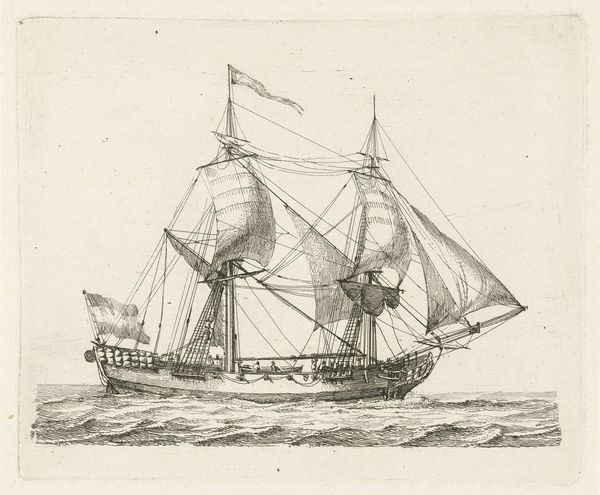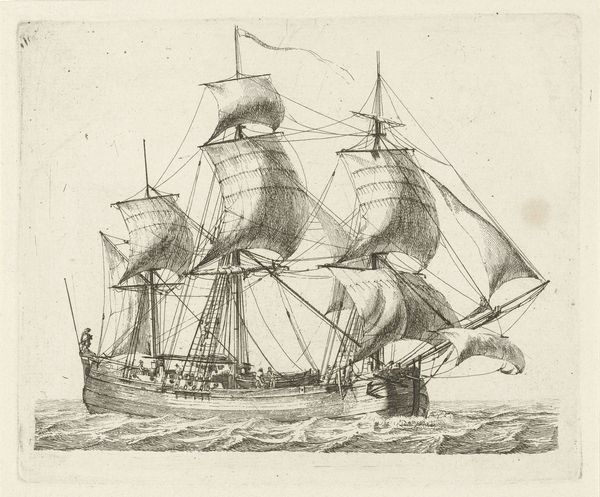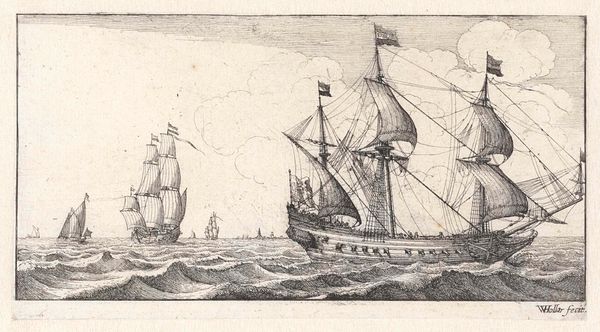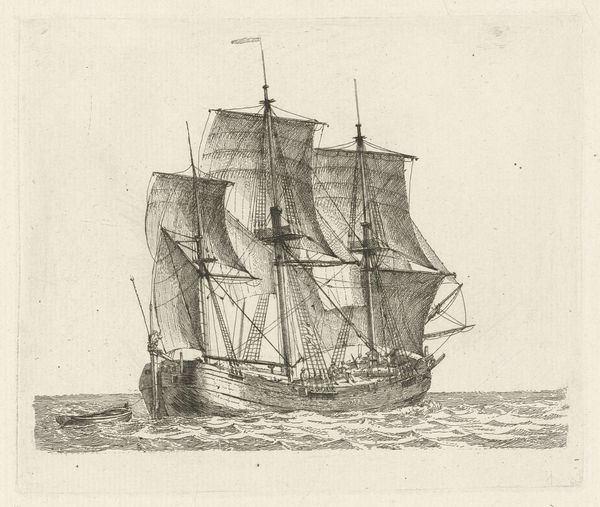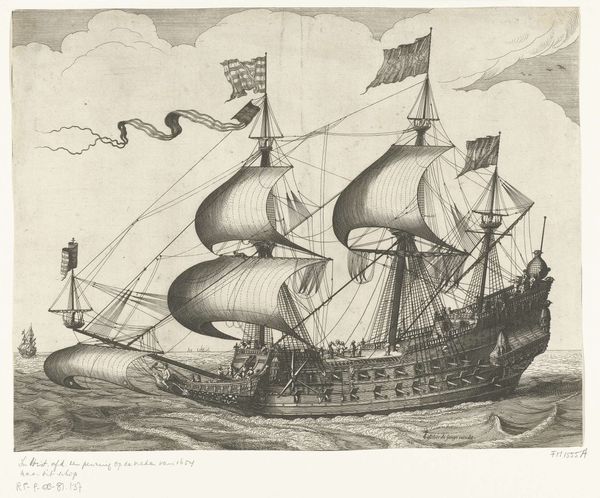
print, etching
#
baroque
#
dutch-golden-age
# print
#
etching
#
landscape
#
line
#
history-painting
Dimensions: 190 mm (height) x 295 mm (width) (bladmaal)
Editor: We're looking at Reinier Nooms' etching, "To store orlogsfartøjer", created sometime between 1623 and 1664. I’m immediately struck by the sheer detail in the rendering of the ships. The lines feel so deliberate, capturing not just the look, but almost the texture of the sails and rigging. What's your take on this piece? Curator: What I see here is a fascinating document of maritime production and consumption. Think about the vast resources - the timber, the canvas, the labor - required to build and maintain these warships. It challenges the separation of ‘high art’ from craft. Editor: So, it’s not just about the ships as symbols of power or trade? Curator: Exactly. Consider the etching process itself: the copper plate, the acid, the printing press. Each step represents a different form of labor. And the final product, the print, would have been circulated and consumed, shaping perceptions of Dutch maritime power. Editor: That's interesting. I was focused on the aesthetic aspect, but you're directing attention to the process, the materials, and the social implications. The means of production are the focus. Curator: The ships *are* the subject. However, let's consider the social context and technical artistry behind their creation to get a true sense of the print's meanings. How might those tiny figures contribute to our understanding? Editor: Looking closer at the print's figures helps tell the human story. Each ship’s creation was labor intensive, relying on many artisans' specific expertise. Curator: Yes, from the ropemakers and carpenters to the sailmakers, it shows interconnected labor that fueled maritime expansion. I find Nooms’ ability to highlight the artistry in making it all very impressive. Editor: Thanks, that shifts my perspective. It's about recognizing the human element, the work, embedded within this image of grand ships and maritime prowess. Curator: Precisely, and questioning who profited, who suffered, and what materials were at play in the Dutch Golden Age's art scene.
Comments
No comments
Be the first to comment and join the conversation on the ultimate creative platform.
